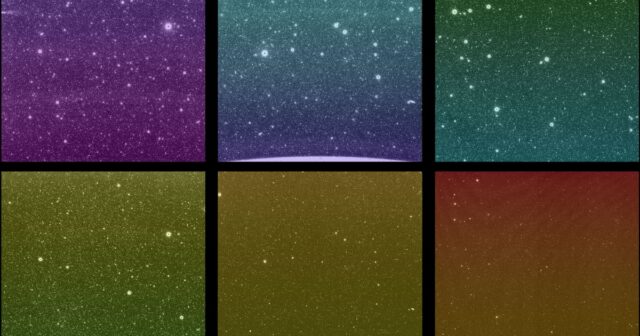A brand new NASA space observatory, SPHEREx, has taken its first test images a few weeks after its launch on March 11, and all indications are looking good for it to take wide and gorgeous views of the sky.
“Our spacecraft has opened its eyes on the universe,” said SPHEREx project scientist Olivier Doré. “It’s performing just as it was designed to.”
The images appear in different colors because they are taken using infrared data, which is beyond the range of human eyesight. To translate that data into images, scientists assign different wavelengths to different colors, so each of the observatory’s six different sensors is given its own color. The data from each sensor can be further broken down in 17 unique wavelengths, meaning that the observatory can see over 100 wavelengths in total.
Gathering these first images is part of the process that engineers go through to check that the spacecraft is ready to work. The instruments still need to be calibrated before they can be used for accurate science, but already the images are looking promising and are inspiring the team at NASA’s Jet Propulsion Laboratory (JPL).
“This is the high point of spacecraft checkout; it’s the thing we wait for,” said Beth Fabinsky, SPHEREx deputy project manager at JPL. “There’s still work to do, but this is the big payoff. And wow! Just wow!”
As well as checking over the detectors, the team needs to manage the cooling of the hardware down to around minus 350 degrees Fahrenheit (minus 210 degrees Celsius). As the spacecraft detects heat as infrared radiation, the hardware needs to be very cold so it doesn’t disrupt those readings.
The spacecraft is set to begin full operations later this month, when it will take around 600 exposures per day as part of its mission to survey the entire sky and investigate the origins of the universe.
“I’m rendered speechless,” said Jim Fanson, SPHEREx project manager at JPL. “There was an incredible human effort to make this possible, and our engineering team did an amazing job getting us to this point.”

















































